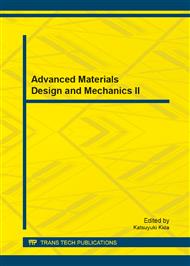p.441
p.445
p.450
p.454
p.459
p.463
p.467
p.471
p.478
Analysis of the Effect the Modal-Parameter on the Milling Stability
Abstract:
In the past few years, it has become a tendency to develop machinery of high speeds and high precision. In order to meet the need for high-speed manufacturing of high precision components, the machine tools structure must be very stiff and have high cutting stability levels. Should the process of the firsthand milling be unstable, the effects include cutting tool breakages, decrease in surface accuracy and could even shorten the machine tolls lifespan. Thus, in the manufacturing of milling, chattering often causes problems for the manufacturer. To prevent cases of milling chattering, there is a need to use a chatter stability lobe to predict the chatter stability and to analyze the effect the modal-parameter has on the stability of milling. This research paper uses the Zero-Order Analytical Method (ZOA) to analyze and compare the effects modal-parameter (natural frequency, damping ratio, modal stiffness) has on the stability of the milling system. The results show that level of stiffness and the damping ratio influences the vertical shape of the chatter stability lobes while the natural frequency affects the lateral shape of the lobes.
Info:
Periodical:
Pages:
459-462
Citation:
Online since:
August 2013
Authors:
Keywords:
Price:
Сopyright:
© 2013 Trans Tech Publications Ltd. All Rights Reserved
Share:
Citation:


